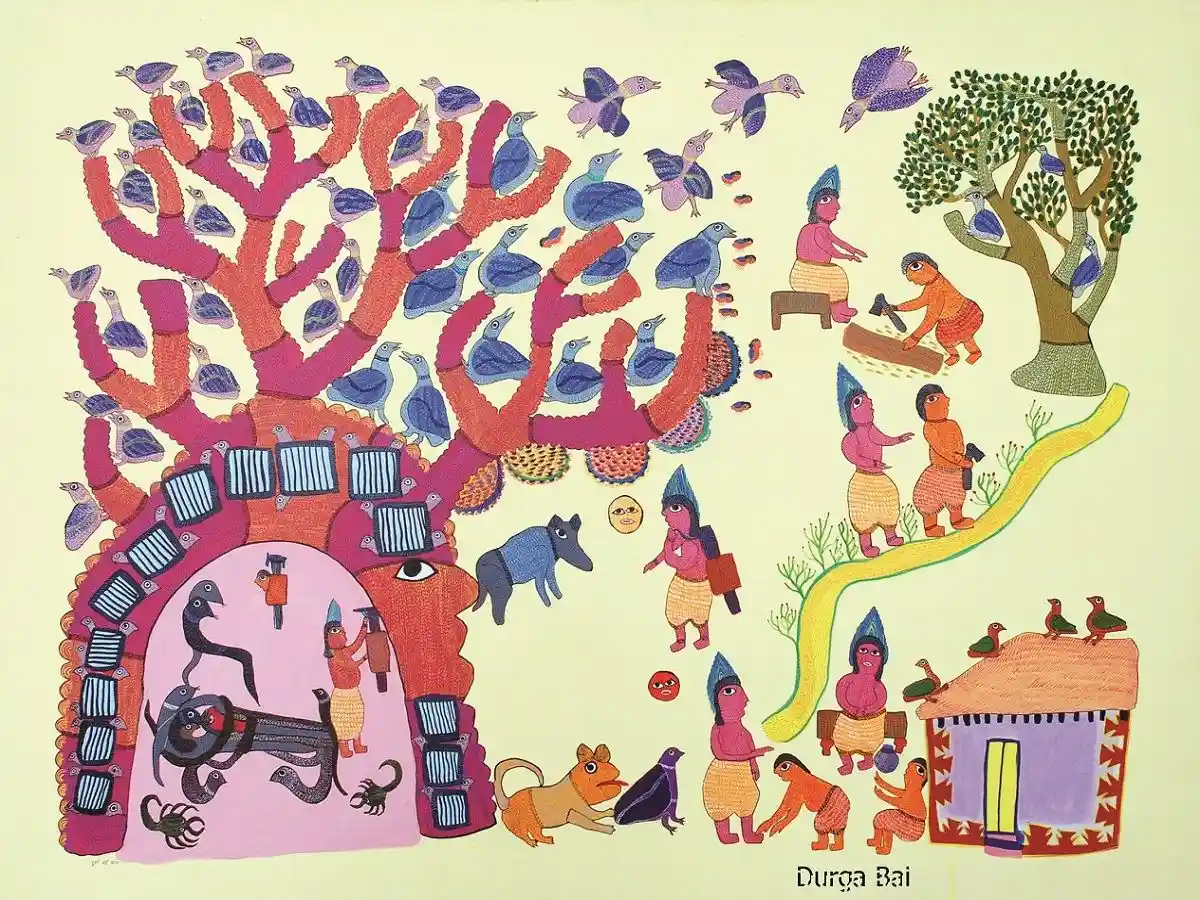Inverting the trope: Gond Ramayani and Laxman’s trial by fire
One of the most popular epics of India is the Ramayana, it’s a story that’s well known across the subcontinent. However what a lot of people don’t know is that there exists in India itself, across its various communities and regions various versions of the Ramayana, which vary greatly not just in their symbolism but in their narrative too.

Cover Image Caption
Gondi Ramyani is a version of Ramayana prevalent among the Gond tribe of Central and South India. The Gond tribe is one of India’s largest ethnic-linguistic communities with a deep-rooted history and cultural practices. And among these practices is also the practice of Gond Ramayani. It contains a collection of 7 tales, loosely strung together to form a cycle, it's traditionally sung by the Pardhan Gonds on an auspicious occasion. The events of these tales take place after the events of traditionally, and in most cases, Rama himself isn’t the focus of the story, instead in Gond Ramayani it's Laxman who takes up the front stage.
The differences and peculiarities of the Gond Ramayani will become more apparent as we go through one of the stories among the seven.
The story is about Laxman and Indrakamani, the daughter of Indra. It takes place after the Rama- Ravana war, when Laxman lives separately from Ram and Sita. Once Laxman while strolling about, hears the Kinara Baja, a musical instrument, and wishes to play it himself. And although he gets one made for himself, he doesn’t play it. He hangs it in his room and goes into a 12-year long slumber. The instrument, frustrated at his idleness, goes into Laxman’s dream and demands to be played. Laxman complies and plays the instrument beautifully.
His melody reaches heaven and Indra’s daughter Indrakamani gets curious about it. She transforms into an eagle and flies down to earth, looking for its source. There she finds Laxman in his palace, fast asleep. She repeatedly tries to wake him up but fails. Frustrated at the situation, she tears her clothes and jewelry and throws them around Laxman’s room.
Sometime later, Sita visits Laxman’s palace and is shocked to see the state of his room. She assumes the worst of him and rushes to Bhima (Yes, you read it right. Bhima, the famous Pandav brother features prominently in the Gond Ramayani and also in Pandavani, the Gond version of Mahabharat). Bhima checks on the situation and then reports it back to Rama. It is then decreed by Rama that Laxman has to go through the Agnipariksha to prove his chastity.
Laxman undergoes the trial by fire and everyone’s joy appears unscathed by fire. And this is where the first story ends.
Now if you are familiar with the narrative of Ramayana, you would’ve easily guessed how the Gondi Ramayan inverts the trope. In contrast to the traditional Ramayan, it is here Laxman, not Sita that goes through the Agnipariksha to prove his chastity, moreover here its Sita who initially raises the question on the chastity of Laxman.
The Gondi Ramayan then becomes an example of how the mixing together of two different cultures can lead to something new. Thus through the Gond Ramayani, the Gond community takes character and setting popular all over India to tell stories that are peculiar to their own culture, thus simultaneously bridging the gap between their own culture and the popular culture of the Indian subcontinent, but also upkeep their own separate identity.


